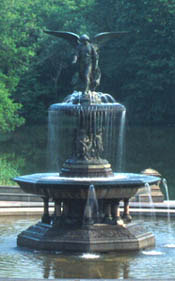
When my fiction book club chose to read and discuss Susan Meissner's
The Shape of Mercy, I had no idea I would be drawn into the worlds of
both a modern-day researcher and the Salem Witch trials. I loved it!
When I learned that Susan was researching Lady Jane Grey, Tudor
England's "nine-day-queen" (who was beheaded), I hoped Susan would
be willing to share some footnotes from history with us. Enjoy!
Enjoy!
--Stephanie G.
What artifact, place, historical event, or woman from history made you want to write this book?

I have long been intrigued by the historical account of Lady Jane Grey and have wanted to write a novel that dove
tailed her story with contemporary tale for several years. She lived during a time when women of noble birth had few opportunities to make their own choices – about anything. We live in a culture today, especially in the Western world, where women can and do make many choices but sometimes life deals you a hand that seems to leave you unable to choose what will happen next. What do you then? Are you ever truly without choice? I created a contemporary fictional character named Jane Lindsay to consider this question. She is an antiques dealer in Manhattan and one day she finds a very old ring hidden inside the binding of an ancient prayer book. Her first name is engraved inside: Jane. But she doesn’t know whose it was or how it ended up hidden inside an old book. The ring then becomes our gateway to the past.
What was the most surprising thing you learned about “the real story” while researching this book?
I was most surprised by the decision that Lady Jane Grey made all on her own. It was life-changing, life-defining, and I hadn’t really connected with it until I researched her story for this book. I thought I knew all the details that defined her. I can’t tell what you what decision was because it would be a spoiler! To give you just a snapshot of who Lady Jane Grey was, she was fifth in line to the throne of England when Henry VIII died. A few years later, at the age of fifteen, she was named Queen of Engl
and by Henry’s 15-year-old son Edward VI as he lay dying. She reigned for nine days.
Is there a historical photograph that inspired you you’d like to share?
Since Jane Grey only lived to be sixteen, there are few portraits of her, and the picture of the one I am sharing here is the one I like the best; the others make her seem so much older than she really was. I actually picture her in my mind looking younger still than this portrait. There is another painting of her I like because the artist told so much with the composition of the painting. It’s beautifully done. But it is of her last moments on earth. So, a sad painting that is beautifully done.

What one non-fiction book helped you research the most (for those who want to learn more)?
Alison Weir’s Innocent Traitor is actually a novelized treatment of Lady Jane Grey’s life and although she paints a different picture of Jane Grey’s personality than I do, Innocent Traitor was a helpful resource and entertaining at the same time. Ms.Weir is a trusted historian and a stickler to detail. She has written many non-fiction titles on the Tudor monarchs and is very respected in the realm of British historians.
What spiritual encouragement did you draw from what you've learned?
I was reminded that love is not a feeling that you must tease into perseverance, nor is it something -- when it seems to have disappeared -- that you idly wait on to see if it will return to you, it's a deliberate choice you make every day of the relationship. It is something that defines you, not simply inspires you.

Visit Susan at
Lady in Waiting
is now available
from your favorite book seller.



















